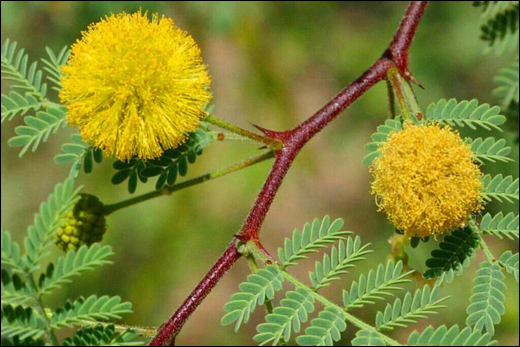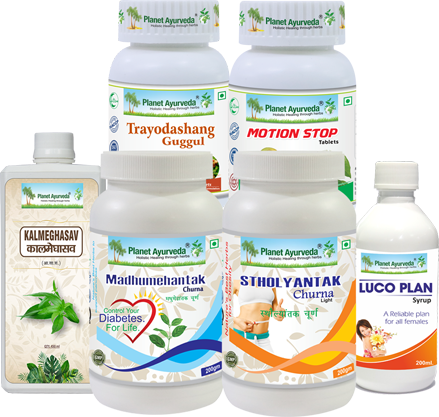Babbul / Indian Gum Tree / Acacia arabica – Classification, Ayurvedic Properties & Dosage
Description
Babbul (Acacia arabica) is referred to as a “healing tree” in Ayurveda. In the traditional medicine system, babbul is used as a natural astringent, wound infections, skin disease, mouth ulcers, diarrhoea. Babbul is a therapeutic potent tree, in recent times researchers have worked on the various activities of this medicinal plant. It is used in the treatment of Alzheimer disease, malaria, diabetes, cancer, heart diseases, oral problems, and infertility.

Synonyms
- Yugalaksta
- Kantalu
- Tikshakantak
- Goshrunga
- Deergha Kanta
- Ajabhaksha
- Sukshma Patra
- Kashay
Special Note About This Plant
Makhana is easily accessible and is greatly used as a snack option, this is very much low in saturated fats, sodium, and cholesterol, a great choice for maintaining a healthy weight, and is very easy to carry anywhere because this is not leaky type, and acts as a great snack to scrub out the cravings used after the gym to regain the energy, even this can be filled in yummy dishes that will surprisingly give an enhanced taste with just adding some makhanas in that. A vegan diet is also called a plant-based diet in which animal products are totally excluded from the diet so they can add up these makhanas and can fill up the need gap. If you travel worldwide, the variation of their uses and how to consume methods will be seen as different , like in the form of popcorn. People cook the leaves and stalks of the makhana and take it in as a vegetable curry. These are named Lawa, Murra, and thurri as in their different grades.
Other Vernacular Names
- In Hindi – Kikar, babbul, babool, babbulu
- In English – Indian gum arabic, Thorn acacia
- In Kannada – Jaali, Gobbli
- In Malayalam – Velutha, Karuvelan
- In Gujarati – Baval, kaloabaval
- In Tamil – Karuvelam
- In Kashmiri – Sak
- In Arabic – Ummughilan
Taxonomical Classification
- Kingdom – Plantae
- Division – Magnoliophyta
- Class – Magnoliopsida
- Family – Fabaceae (leguminosae)
- Genus – Acacia
- Species – A.arabica, A. nilotica
Habitat
The babbul plant is highly demanding of sunlight, but sensitive to cold. It is widely distributed in arid and semi arid regions of the world. The rainfall requirement range is 100mm to 1000mm. Due to its long tap root system, known as Phreatophyte that scavenge water from deeper layers of the soil. It can tolerate salinity, and also grows in shallow and rocky areas.
Morphology
This perennial shrub or small tree can grow as tall as 20m. Branches spread, forming a crown shaped with dark brown to black coloured stem. Bark is thin, rough, fissure, and red brown in colour. Thorns are thin. erect, light grey in colour while mature trees are spineless. Flowers are bright yellow, small, clustered as round heads,and with a sweet fragrance. Fruit pods are linear-oblong in shape having glaucous-green colour, with minute hairs.Seeds are dark brown in colour. Brownish white gum exudes from the trunk.
Chemical Composition
Babbul shows various ethnomedicinal properties due to numerous phytochemicals present in this plant. Let’s discuss phytochemistry of the plant:
| Part of the Plant | Phytochemical | Properties |
| Leaves | Rich in tannins, proteins, saponins, glycosides, triterpenoids, flavonoids, phenol, 𝛄 – sitosterol, D- pinitol | Anti diabetic, Anti cancer, Anti hypertensives, Anti diarrheal, anthelmintic |
| Bark | Carbohydrates, Anthraquinone, Methyl gallate, Gallic acid, Umbelliferone, Diterpene, niloticane, cassane | Antibacterial, Anti diabetic, Anti thrombotic, Anti inflammatory, Anti carcinogenic, Anti oxidant, diuretic, Anti molluscicidal |
| Gum | Tannin, Terpenoids, Polysaccharides, Calcium, Magnesium, Potassium | Antipyretic, Anti asthmatic, Anti ulcerative, Anti diabetic, immuno- modulatory effect, Anti malaria, protective effect on reproductive organs |
| Flowers | Naringenin, Acetylcholine, gallic acid, glucopyranoside, Kaempferol, glucopyranoside |
Anti oxidant, Astringent, immuno- modulatory, treating leucorrhea |
Classical Categorisation
- Bhavaprakasha nighantu – Vatadi varga.
Ancient Verse
Shloka – 1
बब्बूलः किङ्किरातः स्यात्किङ्किराटः सपीतकः|
स एव कथितस्तज्ज्ञैराभाषट्प्रदमोदिनी|
बब्बूलः कफनुद् ग्राही कुष्ठक्रिमिविषापहः ||
Reference – Bhavprakash nighantu/Vatadi varga/ Shloka 37
Interpretation of Shloka – In this shloka, Babbul has various synonyms in Sanskrit such as kinkirata (having spikes), sapitaksh(yellow flowers), aabha (having yellow flowers during flowering season) and pradamodini. Various properties of babbul are mentioned in Ayusuch such as Absorbing (graahee), expectorant (kaphanut), Antileprosy (Kushta), Antihelminatic (krimi), Antitoxin (visha nashak).
Shloka – 2
मालाफलोऽथ बब्बूलो युग्मकण्टो दृढारुहः |
कण्टकी सूक्ष्मपत्रश्च पीतपुष्पः कषायकः ||
बब्बूलस्तु कषायोष्णः कफकासामयापहः |
आमरक्तातिसारघ्नः पित्तदाहार्तिनाशनः ||
बब्बूलस्य फलं रूक्षं विशदं स्तम्भनं गुरु |
Reference – Kaiyadeva nighantu / Aushadhi varga
Interpretation of Shloka – In this Shloka babbul plant is explained, as the fruit pods looks like a garland or chain (malaphala) with two spikes on each side (yugamakanta), and the stem is very strong (dridaruda). Plant has spikes (kantaki),with small leaves (sookshma patra), and yellow flowers (peetapushpa). Babbul is a natural astringent (kashayakaha) and remedy for phlegm and cough, also helpful in burning bile sensation and diarrhoea.
Ayurvedic Properties
- Rasa (Taste) – Tikta (bitter), Kasaya (astringent)
- Guna (Quality) – Laghu (light to digest), Ruksha (dry in nature)
- Veerya (Potency) – Sheeta (coolant)
- Vipaka (Post digestive effect) – Katu (Pungent)
- Karma (Action) – Kapha – Pittashamak (Pacifies kapha and Pitta)
- Projyang (Part used) – Fruits are used
Practical Uses
Babul is referred to as “Healing tree” because all the parts of the plant i.e. stem, fruit, pods, bark and seeds are used in the various medicinal systems. These uses are mentioned as below:
- Dried leaves powder is used to control bleeding from fresh wound injuries.
- Bark is used as a natural astringent and Tanning agent.
- Decoction of bark is used for uttar basti (enema through vagina) in leucorrhoea.
- Chewing fresh stems strengthens and whitens the teeth.
- Bark decoction is used to treat mouth ulcers and other oral problems.
- Seeds are used to reduce diarrhoea by decreasing the intestinal motility.
- Flowers are used to treat nausea, vomiting and hangovers.
- Gum from the tree bark is beneficial in dysentery and to treat diabetes mellitus.
- Gum is used to relieve joint related pain and arthritis.
- Decoction of pod and bark is beneficial in hemorrhoid and bleeding piles.
- Powder of raw legume is used to treat spermatorrhoea and Dhat syndrome.
- Paste of leaves is used to treat skin infections.
- Flowers are also to treat earaches and help to reduce the body temperature.
Part Used
Stem, Bark, Leaves, Flower, Fruit pod, Root, Gum
Dosage
- Internal Uses
- Bark decoction : 30- 80 ml
- Poder of legumes : 3-6 gm
- Paste : 4 gm
- Gum : 3-6 gm
- External Uses
- Its juice or paste can be used as per application
Ayurvedic Products
Classical Formulations
- Babbularishta
- Lavangadi vati
- Khadiradi gutika
- Dasanakanti Churna
Planet Ayurveda Products
- Madhumehantak Churna
- Motion Stop Tablets
- Kalmegasav
- Stholyantak Churna
- Luco Plan Syrup
- Trayodashang Guggulu



